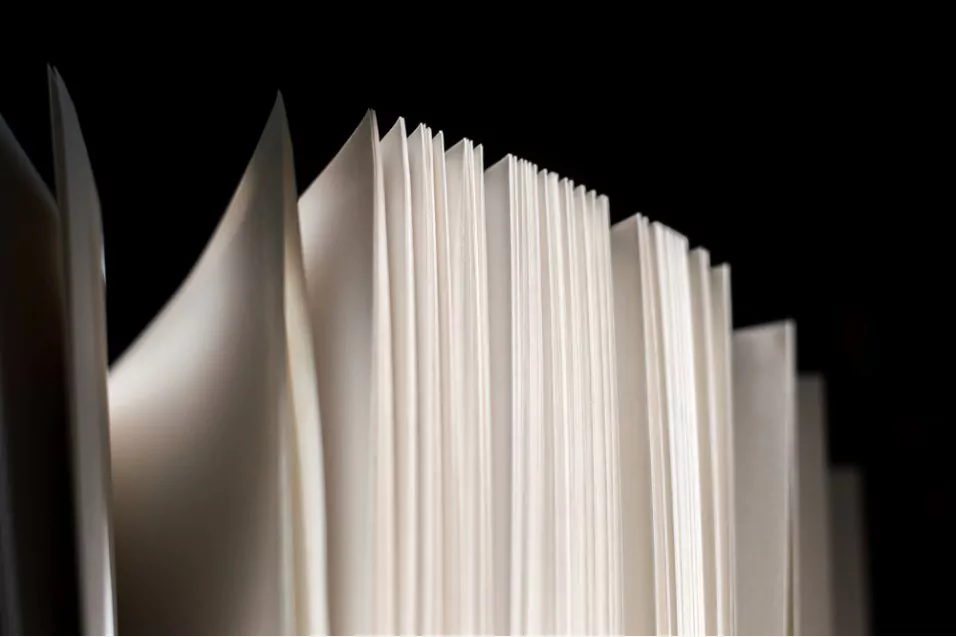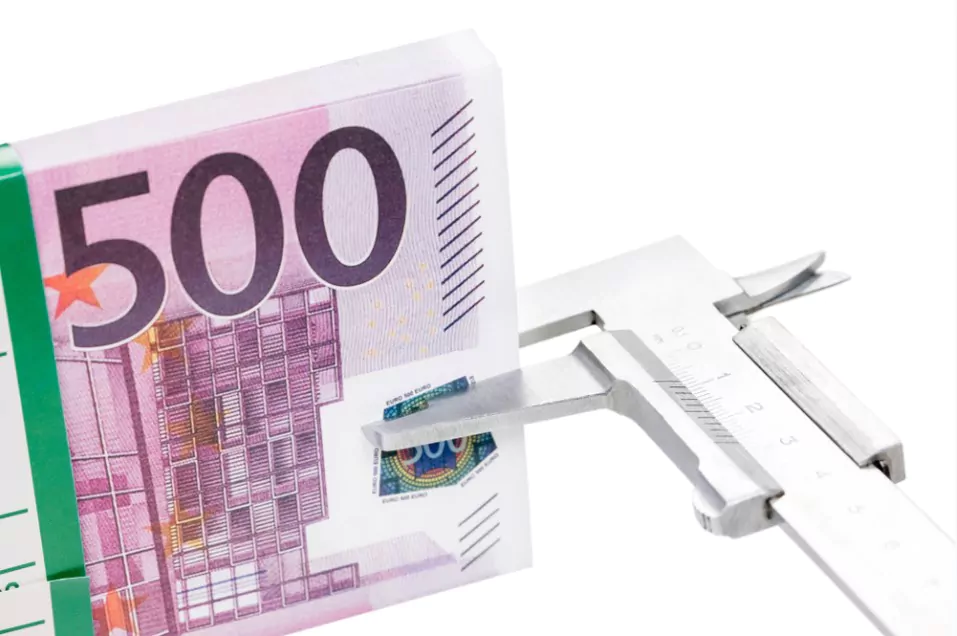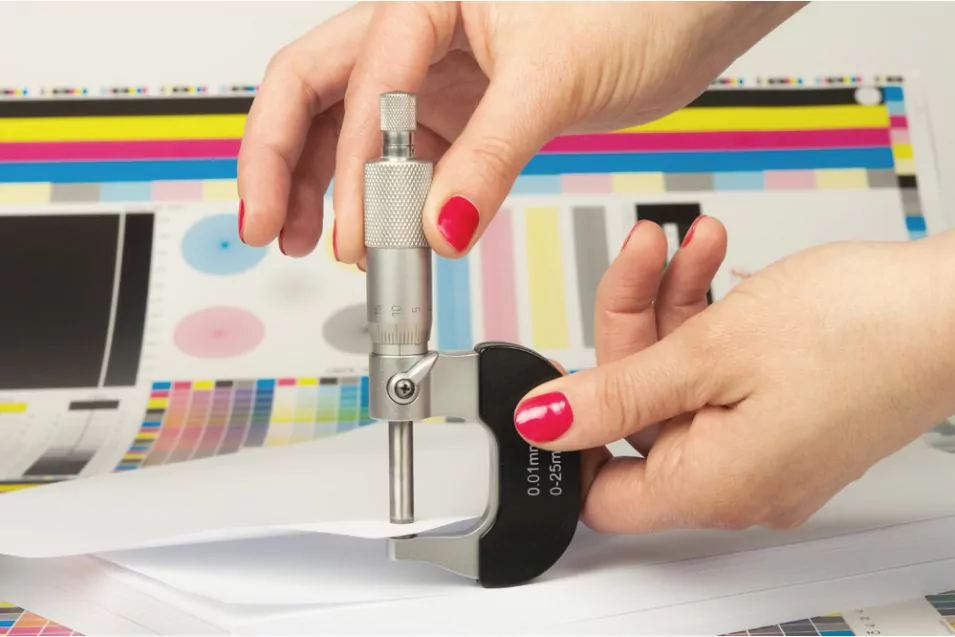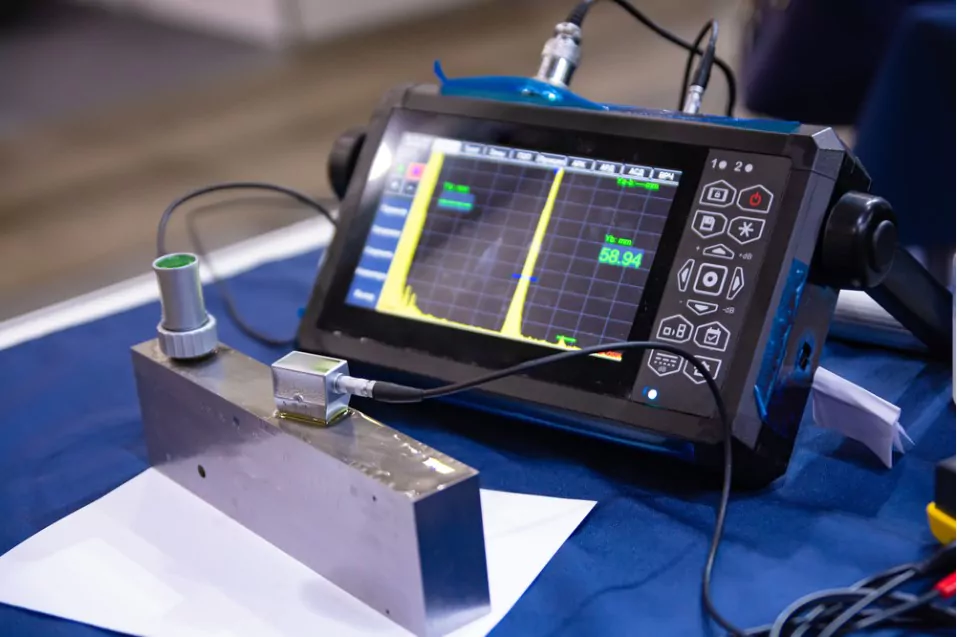A Guide on How to Measure the Thickness of Paper?

Paper is a versatile material used for a variety of purposes, including writing, printing, packaging, and crafting. Measuring the thickness of the paper is an important task in the paper industry, as it helps to determine the quality and suitability of the paper for specific applications. In this blog post, we will discuss different methods of measuring paper thickness and the tools used for this purpose.
- Why is it essential to measure the thickness of paper?
- Which tools are used for measuring the thickness of paper?
- How to measure the thickness of paper using a calliper?
- How to measure the thickness of paper using a micrometre?
- How to measure the thickness of paper using an optical thickness gauge?
- How to measure the thickness of paper using an ultrasonic thickness gauge?
- Wrapping Up
1 Why is it essential to measure the thickness of paper?
The thickness of the paper is an essential factor in determining its quality and suitability for various applications. For instance, printing paper should have a uniform thickness to ensure smooth printing, while packaging paper needs to be thick enough to protect the contents inside. Therefore, measuring the thickness of the paper is critical to ensure that the paper meets the required standards and is suitable for its intended purpose.
2 Which tools are used for measuring the thickness of paper?
The following are some of the tools used for measuring paper thickness:
Calliper
A calliper is a device that is used to measure the distance between two points. It is the most commonly used tool for measuring paper thickness. The jaws of the calliper are placed on either side of the paper, and the distance between the jaws is measured to determine the paper’s thickness.
Micrometre
A micrometre is a device that is used to measure the thickness of an object with high precision. It is a more precise tool for measuring paper thickness than a calliper. The micrometre has a calibrated scale that can measure the thickness of paper accurately.
Optical thickness gauge
An optical thickness gauge is a device that uses a light source and a detector to measure the thickness of the paper. The light source and detector are placed on opposite sides of the paper, and the thickness of the paper is measured by the amount of light that is transmitted through it.
Ultrasonic thickness gauge
An ultrasonic thickness gauge is a device that uses high-frequency sound waves to determine the thickness of the paper. It is a non-destructive tool for measuring paper thickness that can be used on rolls or sheets of paper.
3 How to measure the thickness of paper using a calliper?

The calliper method is the most commonly used method for measuring the thickness of the paper. This method involves using a calliper, which is a device that measures the distance between two points. The paper is placed between the jaws of the calliper, and the distance between the jaws is measured to determine the paper’s thickness.
- Ensure that the calliper is properly calibrated before use.
- Place the paper between the jaws of the calliper.
- Close the jaws of the calliper until they are in contact with the paper.
- Read the measurement on the calliper scale to determine the paper’s thickness.
- If you need to measure the thickness at multiple points, repeat steps 2-4.
- Record the thickness measurements for each point.
- Calculate the average thickness by adding all the thickness measurements and dividing the result by the number of measurements taken.
4 How to measure the thickness of paper using a micrometre?

A micrometre is a device that is used to measure the thickness of an object with high precision. It is a more precise tool for measuring paper thickness than a calliper. The micrometre has a calibrated scale that can measure the thickness of paper accurately.
- Ensure that the micrometre is properly calibrated before use.
- Place the paper between the anvil and spindle of the micrometre.
- Gently tighten the micrometre until it makes contact with the paper.
- Read the measurement on the micrometre scale to determine the paper’s thickness.
- If you need to measure the thickness at multiple points, repeat steps 2-4.
- Record the thickness measurements for each point.
- Calculate the average thickness by adding all the thickness measurements and dividing the result by the number of measurements taken.
5 How to measure the thickness of paper using an optical thickness gauge?

An optical thickness gauge is a device that uses a light source and a detector to measure the thickness of the paper. The light source and detector are placed on opposite sides of the paper, and the thickness of the paper is measured by the amount of light that is transmitted through it.
- Ensure that the optical thickness gauge is properly calibrated before use.
- Place the paper on the gauge’s measurement platform.
- Align the light source and detector so that they are facing each other and the paper is between them.
- Turn on the light source and detector.
- Read the measurement on the gauge’s display to determine the paper’s thickness.
- If you need to measure the thickness at multiple points, move the paper to different locations on the measurement platform and repeat steps 3-5.
- Record the thickness measurements for each point.
- Calculate the average thickness by adding all the thickness measurements and dividing the result by the number of measurements taken.
6 How to measure the thickness of paper using an ultrasonic thickness gauge?

An ultrasonic thickness gauge is a device that uses high-frequency sound waves to determine the thickness of the paper. It is a non-destructive tool for measuring paper thickness that can be used on rolls or sheets of paper.
- Ensure that the ultrasonic thickness gauge is properly calibrated before use.
- Place the paper on a flat surface.
- Hold the ultrasonic thickness gauge perpendicular to the paper.
- Apply a small amount of coupling gel to the paper’s surface.
- Place the ultrasonic thickness gauge’s transducer on the paper’s surface.
- Press the transducer firmly against the paper.
- Read the measurement on the gauge’s display to determine the paper’s thickness.
- If you need to measure the thickness at multiple points, move the transducer to different locations on the paper’s surface and repeat steps 4-7.
- Record the thickness measurements for each point.
- Calculate the average thickness by adding all the thickness measurements and dividing the result by the number of measurements taken.
7 Wrapping Up
Measuring the thickness of the paper is an essential task in the paper industry, as it helps to determine the quality and suitability of the paper for specific applications. There are several methods for measuring paper thickness, including the calliper method, micrometre method, optical method, and ultrasonic method. The tools used for measuring paper thickness include callipers, micrometres, optical thickness gauges, and ultrasonic thickness gauges. Each method and tool has its advantages and disadvantages, and the choice of method and tool will depend on the specific requirements of the application. By following the correct procedure and using the appropriate tool, you can ensure accurate measurements of paper thickness for your desired application.
You can use these papers to make beautiful craft along with your kids. If you want to know more, check our blog on how to make colourful paper fans.
Community Q&A
About This Article
This article has been viewed 551 times.



